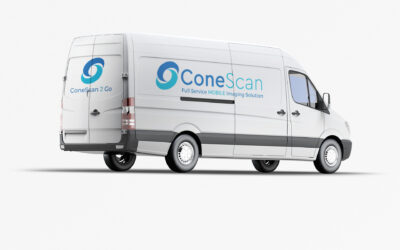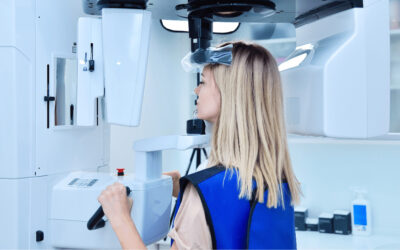With so many options for digital imaging, dental practices have plenty of ways to make patients feel more comfortable about the process and ease any post-visit anxieties. But when you’re working with patients who may be anxious or uncomfortable with dental visits in general, your strategies need to be especially thoughtful. To get a patient’s experience as seamless and stress-free as possible, dentists are implementing cutting-edge technology like cone beam scanning (CBCT). This type of imaging system can reduce the length of time spent on routine procedures like bitewing x-rays, panographic scans, and intraoral photos. It can also help practices adopt new technologies like CAD software for faster diagnosis and virtual consultations for easier remote follow-up. Let’s take a look at 6 benefits of cone beam scanning for both dentists and their patients:
1)Reduce exposure to radiation
X-rays are necessary for diagnosing dental problems and uncovering patient monitoring. But even low-dose x-rays have been linked to an increased risk of cancer, especially when patients are exposed to them repeatedly. CBCT systems don’t use the same type of radiation that’s in standard bitewing x-rays. Instead, they use a type of radiation that’s emitted from all directions in a cone-shaped field. This reduces the risk of overexposure to patients, as well as the amount of radiation that dental staff members are exposed to. CBCT systems also use a lower dose of radiation than conventional x-rays, so patients exposed to the system will experience less exposure to radiation.
2)Improve precision of dental procedures
Cone beam scanning is the gold standard for digital dental imaging, providing a high-quality, 3D image that gives you a clear view of everything in your patient’s mouth. This precision helps you avoid missed areas during procedures, like root canal therapy or surgery. Conventional dental x-rays only offer 2D views of a patient’s mouth, which can result in missed areas and misdiagnosis in certain cases. CBCT imaging, on the other hand, is a 3D system that gives you a full, 360-degree view of your patients’ mouths, revealing any tissues or structures that might be hidden in the normal x-ray view.
3)Shorten the time spent on scans
Digital imaging modalities like CBCT can save dentists time and money across the board by shortening the length of procedures. This can help practices stay in line with insurance billing requirements, while also providing a more streamlined patient experience. The imaging system itself is relatively quick, especially when compared to older, more time-intensive methods like conventional dental x-rays. CBCT systems can also be designed to fit in tighter spaces, which makes them a great option for small dental practices that might not have room for a full-sized machine.
4)Enable the use of CAD software
CAD software (computer-assisted diagnosis) is a decision-making tool that uses bite impressions, photographs, and other images to determine the best treatment plan for a patient. It can help dental practices improve efficiency and outcomes for patients, and CBCT systems can be used with many CAD systems. CBCT imaging is compatible with most dental CAD systems, allowing dentists to input patient data, like oral pathologies, before or during treatment. This can lessen the need for impressions, reduce patient discomfort and error, and speed up procedures.
5)Enable remote consultations for follow-up care
CBCT imaging systems can also provide remote consultations for patients. This can allow patients to discuss with their dentist follow-up care in advance, especially when they’re not able to travel to the dental office. A remote consultation can take place in a virtual environment, like a video call. This can help ease the stress and anxiety of future dental procedures by allowing patients to be more connected to their treatment before they ever step into the office.
6)Help identify problem areas for future care
CBCT imaging can provide dentists with a clear full view of your patient’s mouth, down to each tooth and the surrounding tissues. This level of detail can help you identify problem areas that may require additional care, such as removing plaque or treating gum disease. CAD software can be used to track and identify problem areas in your patient’s mouth, and CBCT imaging can provide a more 3D and detailed image of those areas.
Final Thoughts
Digital imaging is a great way to reduce patient anxiety and cut down on their overall visit time. But CBCT imaging goes above and beyond, offering clearer images and shorter scan times while also helping patients plan ahead for future procedures. Cone beam scanning is the most advanced imaging system available today, and there are several ways it can benefit dental practices. From reduced exposure to radiation to shorter scan times, CBCT imaging is helping practices digitize faster, better, and more efficiently.


